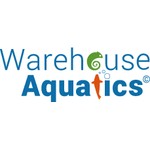How to keep your pond clear and healthy
We often hear from pond keepers who want to know how to keep a pond clear.
First thing’s first, when you fill your pond, it’s important to use tap water, not rainwater. This is because rainwater is too acidic for fish and many aquatic plants.
However, tap water contains chlorine that can irritate fishes’ mucous membranes. That’s why you should leave your pond to stand for a few days before adding fish. During this time, the chlorine gases will escape. The warmer the weather, the quicker this will happen.
How to dechlorinate tap water for pond use
You can help the dechlorinating process by using a pond tap water treatment like this Tetra Pond Aquasafe. This treatment removes the harmful chlorine compounds and metals from your pond water, keeping your pond clear. It also contains powerful colloids and vitamin B1, which protect fish against infections.
How to test pond water quality
Keeping your pond clear doesn’t guarantee that the nutrient levels will be right. So, once you’ve filled your pond, it’s important to test the quality of the water.
Testing water quality allows you to check whether your pond is safe for fish. A kit like this pack of TetraPond Quick 6-in-1 Pond Water Test Strips will test the levels of different nutrients in your pond, like chlorine, ammonia, carbonate, oxygen, and pH.
How to get rid of algae in your pond
Algae growth comes up a lot when we talk about pond maintenance and keeping your pond clear. Algae builds up when you have lots of dead plants, animal tissue, and leftover fish food in your pond. This matter can use so much oxygen that pond fish suffer. Therefore, it’s essential that you prevent – and get rid of – algae.
You can reduce algae buildup and clear pond water by:
- Adding soil that is poor in nutrients to the pond bed
- Keeping water lime-free
- Planting underwater vegetation
- Adding critters that graze on algae (think Ramshorn snails, Daphnia water fleas, and swan mussels)
- Introducing more plants around your pond to increase shade (and reduce sunlight)
- Feeding fish sparingly to avoid uneaten food falling to the bottom of the pond and attracting bacterial growth – use high-quality food too
- Removing algae and dead vegetation – our treatments are really handy for this.
Remember, a buildup of algae growth isn’t uncommon. In fact, it’s the number one complaint from pond keepers. However, our range of algae removers, blanketweed treatments, and water purifiers makes it easy to get rid of algae and green water.
Juwel Internal Filter Media - Size Large (Standard) Fits Bioflow 6.0
Top-quality filter media
Every Bioflow filter system comes fitted with five top-quality filter media:
1. The poly pad catches coarse particles of dirt in the water, thereby serving as a mechanical pre-filter.
2. The carbon sponge absorbs odour compounds and turbidity as well as toxic compounds, leaving you with crystal-clear water. In this way, it acts as a chemical filter.
Optional: 3.The excellent absorption properties of Carbax enduringly and quickly bind discolorations, odours and toxic substances and ensure crystal-clear water.
4. Nitrax is a biological filter medium containing specialist micro-organisms to break down poisonous metabolites (ammonium/nitrite) in your aquarium, thus reducing the danger of fish mortality. What's more, Nitrax reduces the growth of algae by anaerobically breaking down nitrates, thus supporting the vitality of your fish.
5. The coarse sponge is used for mechanical filtering and makes it easier for bacteria to establish themselves in the aerobic zone.
Optional: 6. Cirax / Phorax / Amorax
Cirax is an organic filter medium which creates the optimum conditions for useful bacteria to settle, due to its large, highly porous surface.
Phorax is a highly effective filter medium used to break down phosphates in your aquarium.
Amorax should be used if your aquarium shows increased ammonium values.
7. The fine sponges are used mainly for biological filtering in the anaerobic zone.


